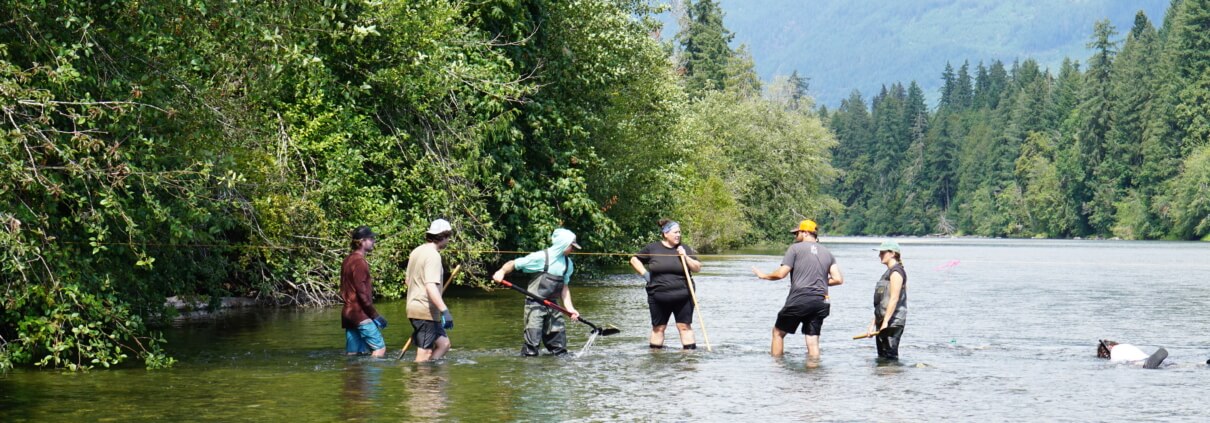Survival at Sea
The future of Chinook salmon from the west coast of Vancouver Island (WCVI) hangs in the balance.
They are currently threatened and at risk of becoming endangered, according to the Committee on the Status of Endangered Wildlife in Canada.
The exact reasons for their at-risk status remain unclear, but it’s widely agreed that poor Chinook survival during their first year in the ocean contributes to declines.
PSF and Ha’oom Fisheries Society have partnered on a multi-year project, working with DFO and multiple First Nations to help bridge this knowledge gap.
Rebuilding Chinook salmon is a key priority for Ha’oom Fisheries Society, which works for five Nuu-chah-nulth Nations: Ahousaht, Ehattesaht, Mowachaht/Muchalaht, Hesquiaht, and Tla-o-qui-aht First Nations.
“The principles of hishuk ish tsa’walk (everything is connected) and isaak (respect) are critical to all Nuu-chah-nulth Nations. Researching and conserving suuḥaa (Chinook salmon) aligns directly with their cultural responsibilities and long-standing practices of sustainable resource management,” says Keaton McCallum, a biologist with Ha’oom Fisheries Society.
The project has two key approaches:
- Tagging juvenile Chinook salmon to determine where and when they are dying
- Combining survival data with information on pathogens and environmental stress, gathered from DNA/RNA ‘Fit-Chips’ — a technology similar to what’s used in personalized human medicine
“By uncovering the challenges young Chinook salmon face and the ultimate fate of those same fish, we’ll gather more direct evidence than ever before about what’s impacting survival,” says Dr. Andrew Bateman, the lead of PSF’s Salmon Health Program.
“These findings will help guide restoration and protection efforts to rebuild these at-risk Chinook salmon.”

The research team is mostly tagging hatchery-raised fish since there are so few wild Chinook remaining. Because both wild and hatchery fish share the same habitats and face similar challenges, researchers will use collected data to better understand wild Chinook. Photo: Sam James
How to track a Chinook
It all begins with tiny Passive Integrated Transponder (PIT) tags — identification devices about the size of a grain of rice. As of September 2024, more than 20,000 WCVI Chinook have been tagged in hatcheries and the ocean.
Each PIT tag emits a unique identification code when it encounters a detection system, telling researchers if and when individual fish have survived life at sea and returned as adults.

In August 2024, the research team installed North America’s longest in-river PIT-tag detection system in the Somass River near Port Alberni, spanning almost 110 metres across the river’s width. Photo: Braela Kwan
Researchers will pair survival estimates from PIT tags with genomic data from Fit-Chips — technology developed by Dr. Kristi Miller at DFO with support from PSF — which recognize specific stress signals and pathogens in salmon, determined from a nonlethal gill biopsy.
Through this novel combination of methods, the research team will relate stress and infection to the survival of individual WCVI Chinook salmon for the first time.
For Ha’oom Fisheries Society, this project ultimately reinforces the five Nations’ values, including food sovereignty.
“By participating in these research efforts, the Nations maintain control over their food systems, aligning with their rights to manage their lands and resources as they have since time immemorial,” says McCallum.

Photo: Braela Kwan
This project is supported by the British Columbia Salmon Restoration and Innovation Fund (BCSRIF) — a joint program from the Government of Canada and the Province of British Columbia.



